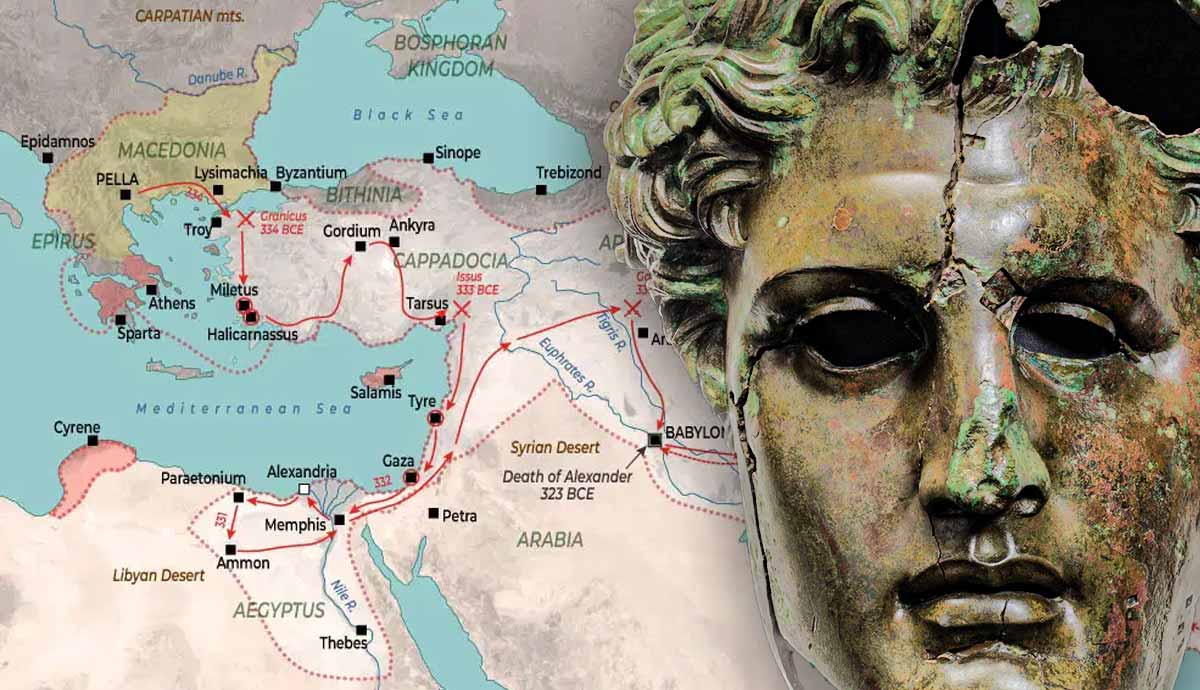
Rome began its slow, piecemeal conquest of Britannia in 43 AD, subduing the various tribes one by one. Some tribes sought to preserve their independence by allying themselves with Rome. Prasutagus was one of eleven kings who surrendered to the Roman emperor Claudius following the initial Roman conquest in 43 AD. As such he was officially installed as king of the Iceni and ally of Rome. His long reign was remembered as being particularly prosperous. When Prasutagus died, he named the Roman emperor Nero as his co-heir along with his two daughters. While Prasutagus had hoped that this would ensure the safety of his kingdom, and his family, it instead set the stage for Boudica’s massive revolt.
Boudica And The Ravages Of The Romans

Boudica’s husband, Prasutagus, named the Roman emperor Nero as co-heir with his two daughters in his will. It was hoped that this act of deference would protect his lands and his family. However, the will was ignored, and local Roman officials moved to seize Prasutagus’ lands and property. Earlier loans that had been made to the leading men of Britannia were called in all at once by Decianus Catus, procurator of the province who demanded repayment in full. Roman centurions broke into Prasutagus’ home, ostensibly in search of the money. In the process, they scourged Prasutagus’ wife Boudica and raped his two daughters.
The sources agree that Boudica was herself, a woman of royal descent. She was said to have tall, with long tawny hair that hung below her waist. Her voice was strong, and harsh, which complimented her piercing stare. As befitted a woman of her stature in Britannia, she wore a large golden necklace, possibly a torc, and a colorful tunic fastened by a brooch. It was the harsh treatment that she and her daughters received at the hands of the Romans which was the immediate cause of this powerful woman’s revolt.
Call To Arms

Following the Roman assault on Boudica and her daughters, the Iceni began to conspire with their neighboring tribes, such as the Trinovantes and others. Boudica was soon chosen to lead the revolt; her oratory skills were said to be quite impressive. Not willing to leave anything to chance, Boudica also performed acts of divination to raise the morale of the army and hopefully guarantee victory. According to one story, she released a hare from within the folds of her dress and interpreted the direction it ran as the path laid out for the army by Andraste, a British goddess of victory.
The timing of the revolt was well planned. Gaius Suetonius Paulinus, the Roman governor of Britain was on the far side of the island leading a military campaign. British rebels had taken refuge on the island of Mona (modern Anglesey in North Wales), stronghold of the druids. At the time of Boudica’s revolt, Suetonius and most of the Roman forces in Britain were occupied with this campaign. It would therefore take them a considerable amount of time to finish up their campaign and march back across the island. In the meantime, Boudica’s revolt would be able to spread and destroy any isolated Roman forces left behind in a piecemeal fashion.
Rage And Rebellion Against Rome

The first target of Boudica’s army was the city of Camulodunum (modern Colchester). This city was formerly the capital of the Trinovates. However, the Romans had seized most of the land and transformed the city into a colonia, a settlement established to reward Roman veterans for their service. Not only had the Roman veterans and other settlers mistreated the local Britons, but they also forced them to pay for the construction of a temple to the deceased emperor Claudius during whose reign the Romans had invaded Britain. As such, Camulodunum had become the focus of British resentment.
Boudica’s rebellion and approaching army had not gone unnoticed by the inhabitants of Camulodunum. They appealed to the procurator Decianus Catus for reinforcements, but he sent only a mere 200 additional cavalrymen. Boudica’s large army smashed its way into the city, methodically destroying everything in its path. A bronze statue of the emperor Nero, which probably stood in front of the temple to Claudius was toppled and decapitated. Its head was taken away as a trophy. The last defenders took refuge in the temple to Claudius where they were able to hold out for another two days before the Britons broke in. Modern archaeological excavations have confirmed the widespread destruction of the city.
A Legion And Londinium

During the attack on Camulodunum, an attempt was made to relieve the city by Quintus Petillius Cerialis. Brother in law of the future emperor Vespasian, Cerialis would later play a leading role in the Year of the Four Emperors and the Batavian Revolt. At the time of Boudica’s revolt, he was the commander of the Legio IX Hispania. Boudica’s already victorious army intercepted Cerialis’ forces before they could reach the ruins of Camulodunum. In the ensuing battle, all the Roman infantrymen were killed and Cerialis barely managed to escape back to the Roman camp with what was left of his cavalry. After this defeat, Decianus Catus, the man whose actions had started this chain of events fled to Gaul.
In the meantime, Suetonius and his forces had rapidly returned from their victorious campaign against Mona. Boudica’s next target appeared to be the city of Londinium. Founded shortly after the Roman conquest of 43 AD, Londinium was quickly becoming a thriving commercial center. However, Suetonius soon concluded that he lacked the numbers to defend the city and decided to abandon it. When Boudica’s army arrived, all those who had not evacuated were slaughtered and the city was burned to the ground. Modern archaeological excavations have revealed that the destruction extended to the city’s suburbs on the southern bank of the Thames river.
Suetonius Rallies The Romans

After the destruction of Londinium, Boudica’s army next attacked the municipium of Verulamium (modern St. Albans). Here the archaeological evidence is limited, so the full extent of the destruction is unclear. According to the sources, the total number of people killed by Boudica’s forces in the three cities was 70,000-80,000. The numbers were so high because the Britons had no interest in taking slaves or prisoners and killed all they came across.
While Boudica destroyed Londinium and Verulamium, Suetonius was busy gathering as many soldiers as he could find. The Legio IX Hispania had been routed by Boudica’s forces earlier and was in no condition to fight, while the prefect of the Legio II Augusta was either unable or unwilling to converge with Suetonius’ army. Nevertheless, Suetonius was able to gather an army which included the Legio XIV Gemina and the Legio XX Valeria Victrix, along with several units of auxiliaries. This meant that Suetonius now had an army of around 10,000 with which to face Boudica’s army. Though greatly exaggerated by the sources as now numbering around 230,000-300,000, Boudica clearly had the far larger army.
Boudica’s Revolt: Battle For Britain

The exact location of the battle between Boudica’s Britons and Suetonius’ Romans is unknown. The sources describe the battlefield as being inside of a defile, and mention woods behind the Roman position. Traditionally, the battlefield is located along the Roman road known as Watling Street, possibly near the modern High Cross in Leicestershire at the junction of Watling Street and Fosse Way.
In any event, when the two armies met the British lines extended far beyond those of the Romans, who were greatly outnumbered. Boudica addressed her army from her chariot and gave a short speech before ordering an attack. However, in order to attack the Romans, Boudica’s army needed to pass through the defile which forced them together into an unwieldy mass. As the compact mass of Britons advanced, the Romans rained missiles down onto them.
When the Romans finally expended all their missiles they charged forward in a wedge-like formation. The disordered Britons attempted to retreat but were blocked by a cordon of their own wagons which had come up behind their army. Enraged by the destruction of so many towns and the deaths of so many Roman civilians, Suetonius’ soldiers gave no quarter to any British men, women, children, or animals.
Aftermath And Aftershocks

Boudica did not survive long after the defeat, though the sources are divided regarding her fate. According to one version, she committed suicide by ingesting poison, while in another version she died of an illness and was given a lavish funeral. Suetonius conducted a brutal punitive campaign against the tribes who had fought alongside Boudica. Fearing that Suetonius’ actions would provoke another rebellion, the emperor Nero replaced him with a more conciliatory governor. Catus Decianus, whose actions incited the rebellion and who fled to Gaul was relieved of his position and replaced. Surprisingly, there is no record of what became of Boudica’s two daughters.
While Boudica’s revolt did not last long it was serious enough to cause the Roman emperor Nero to consider abandoning Britain. This may have been the goal of the Britons who were said to have drawn inspiration from a similar revolt in Roman Germany led by Arminius. However, Suetonius’s victory was enough to confirm Roman control of the province. The Romans had many years of hard campaigning ahead and they never completely conquered the island of Britain.
Boudica’s Legacy Today

Ultimately, Boudica’s revolt was a failure. Yet her story was recorded by the Roman historian Tacitus, one of the greatest historians of Rome. So, while the memory of Boudica faded over time, she was never completely forgotten. In Britain, Boudica continued to feature in Medieval chronicles, such as in the 6th-century work of Gildas. Boudica was reintroduced by Polydore Vergil and Raphael Holinshed in the mid-16th century. Shortly thereafter, Boudica became associated with Elizabeth I who in 1588 sought to defend Britain from the Spanish Armada.
By the early modern period, there was renewed interest in her life and achievements. In the Victorian era interest in Boudica exploded. She was featured in poems, paintings, statuary, and even had several ships named after her. Suffragettes also adopted Boudica as one of their symbols in the early 20th century. Today there are permanent Boudica displays in some of the most important museums in England, such as the Museum of London, Colchester Castle Museum, and Verulamium Museum. There is even a 36 mi (58km) footpath called Boudica’s Way which passes through the countryside of Norfolk.










